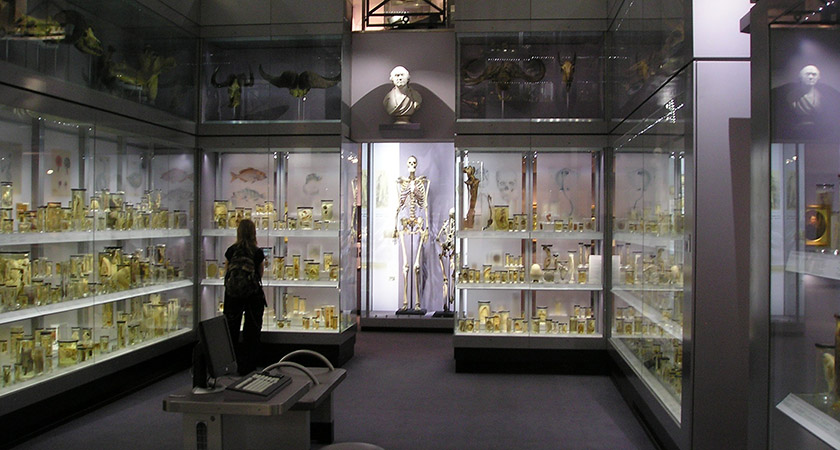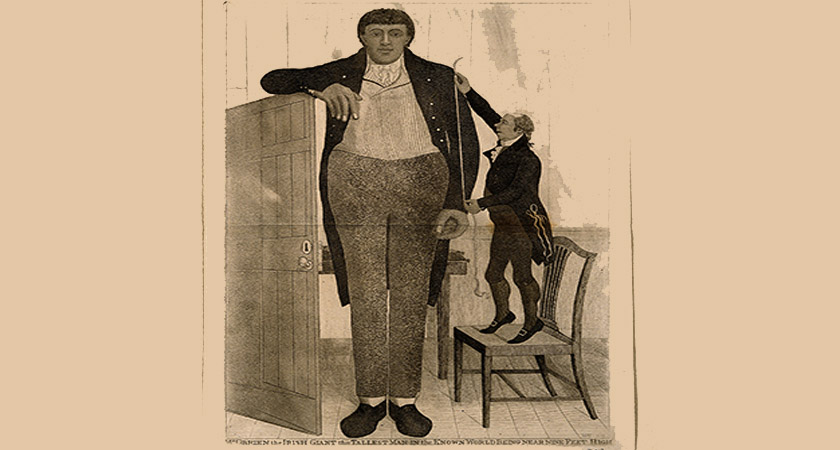A PETITION has been launched to rally Britain's Royal College of Surgeons to release the bones of an Irish giant so that he can be finally buried at sea – as per what is claimed to be his dying wish.
The skeleton of Charles Byrne, who stood at 7ft 7in tall, is currently on display for public viewing at the Hunterian Museum in London.
Byrne died in 1793 and requested shortly before his death that he be buried at sea to stop his body being used for scientific research.
The tall Irishman found fame in London in the 1780s where he made a fortune participating in ‘freakshows’ for the general public.
Fame eventually got the better of Byrne, who took to drink and died at his home in Charing Cross at the age of just 22.
After his death, his body was acquired by the eminent John Hunter, and put on display as part of a collection of anatomical specimens acquired by the surgeon.
US-based Richard Mckee, who set up the petition to return Byrne’s bones for burial, said: “Charles Byrne made explicit arrangement before he died that his body would be buried at sea.
“Sadly, his burial wishes were betrayed and he was put on display at the Hunterian Museum in London.
“Imagine someone stole your corpse and put it on display like some circus freak show. It’s wrong, especially now.”
Byrne’s final wish to be buried at sea is not legally binding as there was no written will or instruction as to the claim.
But that hasn’t stopped campaigners such as Mr Mckee, who have continually lobbied for the Royal College of Surgeons to release the Irish giant’s skeletal remains for his dying wish of a sea burial.
Thomas Muinzer, a legal scholar at the University of Stirling in Scotland, told The Irish Post: “The Hunterian Museum and the Royal College of Surgeons’ possession of Byrne’s skeleton may once have benefited medical research.
“But as a justification for not burying his skeleton, that case is no longer tenable.
“Now that Byrne’s DNA has been extracted, it can be used as an alternative in further research.”
Charles Byrne was born in Co. Tyrone in 1761 to a poor family with no history of gigantism.
He possessed an excessive growth hormone and was exhibited for money as a ‘curiosity’ in his native Ireland as a young man.
After moving to London to pursue his career as an exhibition, Byrne was befriended by the surgeon Hunter, who wished to use his corpse for research purposes after his death.
 The Hunterian Museum prides itself on its 'gruesome instruments and preserved specimens' (Picture: Wikipedia Commons)
The Hunterian Museum prides itself on its 'gruesome instruments and preserved specimens' (Picture: Wikipedia Commons)Byrne refused, but at his funeral his coffin was opened and his corpse was swapped for a dead weight.
“What has been done cannot be undone but it can be morally rectified,” said Muinzer.
“Surely it is time to respect the memory and reputation of Byrne, the narrative of his life, including the circumstances surrounding his death?”
Museum chiefs at the Hunterian Museum reject the suggestion that the skeleton of the ‘Irish giant’ should be returned for sea burial.
A Royal College of Surgeons spokesperson told The Irish Post: ‘’The RCS believes that the value of Charles Byrne’s remains, to living and future communities, currently outweighs the benefits of carrying out Byrne’s apparent request to dispose of his remains at sea.
“No will or testament survives - there is no direct evidence of his burial wishes.
"At the present time, the Museum’s Trustees therefore consider that the educational and research benefits merit retaining the remains.”


